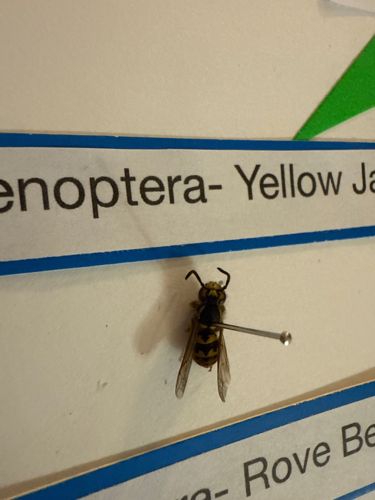Yellowjacket
Scientific Name: Vespula spp. or Dolichovespula spp.
Order & Family: Hymenoptera, Vespidae (subfamily Vespinae)
Size: Workers range from 10-15 mm (0.4-0.6 inches); queens are larger, up to 20 mm (0.8 inches).

Natural Habitat
Yellowjackets are generally found in temperate climates. Nests are typically built in sheltered places, such as underground in old rodent burrows, in tree hollows, wall voids, or dense bushes, and sometimes in attics or sheds.
Diet & Feeding
Yellowjackets are predatory insects, feeding on other insects, spiders, and carrion. They also consume sweet substances like nectar, fruit, and human foods and beverages. Larvae are fed chewed-up insects and meat by adult workers.
Behavior Patterns
Yellowjackets are social insects living in colonies with a queen, workers, and drones. They are known for their aggressive defense of their nests, especially in late summer and early autumn when colonies are largest and food sources may become scarcer. They are attracted to human food and can be a significant nuisance at picnics and outdoor gatherings. Unlike bees, they can sting multiple times.
Risks & Benefits
Risks include painful stings, which can be dangerous to individuals with severe allergic reactions (anaphylaxis). They can become aggressive when foraging or defending their nest. Benefits include their role as predators of many pest insects, which helps control insect populations in gardens and agricultural settings.
Identified on: 10/18/2025